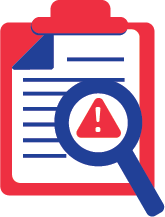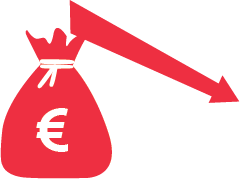Smart ship vs Digital Twin
Very often, many people confuse terms such as Smart Ship and Digital Twin. When introducing modern technologies into their business processes, each shipping company should understand what the difference is and could decide which solution to use.
Today, very often among the marine and shipping companies, one can find such terms as Smart Ship and Digital Twin. At first glance, this may seem like synonyms that mean the same technological concepts. But in reality this is not entirely true. These two terms are different from each other and in this article we would like to tell you little about each term separately, in order to remove the misunderstanding once and for all and so that each shipping company, introducing modern technologies into its business processes, could decide which solution to use.
Digital twin
A digital twin is a dynamic digital representation of an object or a system describing its characteristics and properties as a set of equations. Complex processes involving a multitude of actors are often difficult decision-making environments that are best modelled digitally prior to action.
A digital twin includes both the hardware to acquire and process data and the software to represent and manipulate these data, making them more powerful than models and simulations because they leverage digital data streams to bridge the barrier between the physical entity and its representation.
This means that digital twin analytics relies on historical data (e.g. a data lake), and real-time digital data streams (e.g. IoT generated data), to analyse possible outcomes.
A digital twin includes both the hardware to acquire and process data and the software to represent and manipulate these data, making them more powerful than models and simulations because they leverage digital data streams to bridge the barrier between the physical entity and its representation.
This means that digital twin analytics relies on historical data (e.g. a data lake), and real-time digital data streams (e.g. IoT generated data), to analyse possible outcomes.
The term Digital Twin can be used for more than just a vessel. Most often, digital twins are created for the purpose of modeling objects directly related to industrial production. A digital twin also can be used for monitoring, diagnostics and prognostics to optimize asset performance and utilization. In this field, sensory data can be combined with historical data, human expertise and fleet and simulation learning to improve the outcome of prognostics. Therefore, complex prognostics and intelligent maintenance system platforms can use digital twins in finding the root cause of issues and improve productivity.
Digital twins of autonomous vehicles and their sensor suite embedded in a traffic and environment simulation have also been proposed as a means to overcome the significant development, testing and validation challenges for the automotive application, in particular when the related algorithms are based on artificial intelligence approaches that require extensive training data and validation data sets.
Digital twins of autonomous vehicles and their sensor suite embedded in a traffic and environment simulation have also been proposed as a means to overcome the significant development, testing and validation challenges for the automotive application, in particular when the related algorithms are based on artificial intelligence approaches that require extensive training data and validation data sets.
Situational parameters
Digital twin
Situational simulation
Decision making
Data streams
Mathematical models
Data lakes






Smart Ship
The term Smart Ship or Smart Vessel is applied to ships on which a large number of sensors are installed to collect all possible information about the state of the vessel, various indicators, etc. In contrast to Digital Twin, all information collected from the vessel is aggregated in one place, in the office on the shore or, for example, on the captain's bridge, and the decision is made based on the current readings, without additional simulation of the situation.
But for this concept to work, an IoT (Internet of Things) platform is needed that streamlines this process.
The data is stored in a centralized cloud-database providing dashboards for the shipowner and/or managers to use and analyze the data, before making a decision.
To summarize, IoT adoption in the maritime industry is growing with the emergence of many new innovative enterprises. We also notice that a Smart Ship needs a dedicated bandwidth. Communication should no longer be a hidden fee for the ship owner / manager and should be included in the service of the app provider. Read more about marine communications.
But for this concept to work, an IoT (Internet of Things) platform is needed that streamlines this process.
The data is stored in a centralized cloud-database providing dashboards for the shipowner and/or managers to use and analyze the data, before making a decision.
To summarize, IoT adoption in the maritime industry is growing with the emergence of many new innovative enterprises. We also notice that a Smart Ship needs a dedicated bandwidth. Communication should no longer be a hidden fee for the ship owner / manager and should be included in the service of the app provider. Read more about marine communications.
Digital Twin
Smart Ship
- Requires the installation of both hardware on the ship and a large number of software systems for correct process simulation
- Receives data from other external sources (for example, weather, currents, waves)
- Provides solutions based on historical data
- Minimizes the risk of human error through a large number of algorithms and accurate modeling
- It can be used not only for making decisions in real time, but also for predicting events using machine learning algorithms, big data, AI and other modern technologies
- More expensive solution compared to Smart Ship, but more technological and allows for more accurate prediction of the behavior of both the entire fleet and each ship separately
- Relies more on various sensors installed on the ship, almost does not require a large number of different algorithms and other systems
- Aggregates a larger (sometimes not always necessary) amount of information from the ship
- Displays various indicators on a special dashboard, for obtaining data about the ship in real time, analyzing them and making decisions
- Aggregates all data on servers and provides great opportunities for their further analysis or use in other systems / other companies
- More unified solution compared to Digital Twin, since there is no need to use historical data for different types of ships
Concept Comparison
In Marine Digital we develop the special digital twin hardware and software complex that accumulates the AMS, NMEA and other sources (incl. analog data sources) data to provide a better analytics for vessel performance monitoring, maintenance prediction and navigation purposes.

TOP 5 factors contributing to lower fuel costs for Shipping companies
Get a presentation with a full description of the features and free pilot project with trial of Marine Digital FOS for 2 months
"Clicking the button, you consent to the processing of personal data and agree to the privacy policy"

Get an overview "The Pathway to Zero Carbon Shipping:
IMO Compliance and CII Optimization through SEEMP" on email and download it for FREE! Leave your email now!
"Clicking the button, you consent to the processing of personal data and agree to the privacy policy, as well as consent to subscribe to the newsletter. "
Аdvantage of Fuel Optimization System from Marine Digital:

Marine Digital FOS can be integrated with other system and third-party's solutions through the API. To implement vessel performance monitoring for any vessel, we are using mathematical algorithms, machine learning and the same equipment as in FOS. The more data we collect from vessels, the more precise reports and recommendations our system will perform according to your individual requirements in fleet management.
If you have any questions about the solutions and the Marine Digital System platform, write to us, we will be happy to answer
If you have any questions about the solutions and the Marine Digital System platform, write to us, we will be happy to answer

Increased business process speed

Reducing to zero the number of errors

Best offer to the clients

Reduction in operating expenses
Have a questions?





